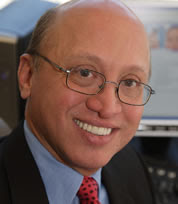
It is amazing how much we have learned about the science of hair. Over two decades ago a medication used for high blood pressure (minoxidil) was shown to grow hair when applied to some men’s scalps. Later was shown that women with thinning scalps could also benefit from this magical potion. This had led to what is now marketed as today’s Rogaine®. The problem was that the medication in general is only useful when topically applied to the scalp.
For the last 20 years promoting hair re-growth has remained an enigma for body areas outside the scalp. Physicians frustrated with their inability to induce hair growth then switched gears and began to focus on laser hair. For the last 15 years we have developed all kinds of lasers and laser-like systems for the removal of unwanted hair. These included ruby, alexandrite, diode and Nd:YAG lasers as well as intense pulsed light sources. These in-office devices have become highly successful and have now led to the development of less powerful, but still somewhat successful home hair removal devices.
So folks can now easily have their hair removed, but how can they re-grow it? Of course there are always hair transplants. These surgical procedures are usually performed on the scalp, but have been successfully undertaken on other locations on the body as well. These kinds of surgical approaches care near impossible to perform for such tough areas as the eyelash region. Women, for years have done all kinds of things to plump up their eyelashes. But results can be very unnatural.
The recent FDA approval of Latisse, by Allergan (the makers of Botox®) may change that. Latisse is the first and only FDA-approved product to enhance eyelashes (making them darker, longer, and thicker). Ther discovery of this remarkable product occurred when physicians noted that another product already on then market for the treatment of glaucoma (Lumigan) was found to promote eyelash growth. Lumigan is applied as eye drops in the eye. Latisse, in contrast, is applied directly to the eyelashes with a special applicator. Today we can grow hair, tomorrow perhaps skin. Who knows what is next?
David J. Goldberg, MD
Sanctuary Medical Aesthetic Center
Skin Laser & Surgery Specialists of NY and NJ








